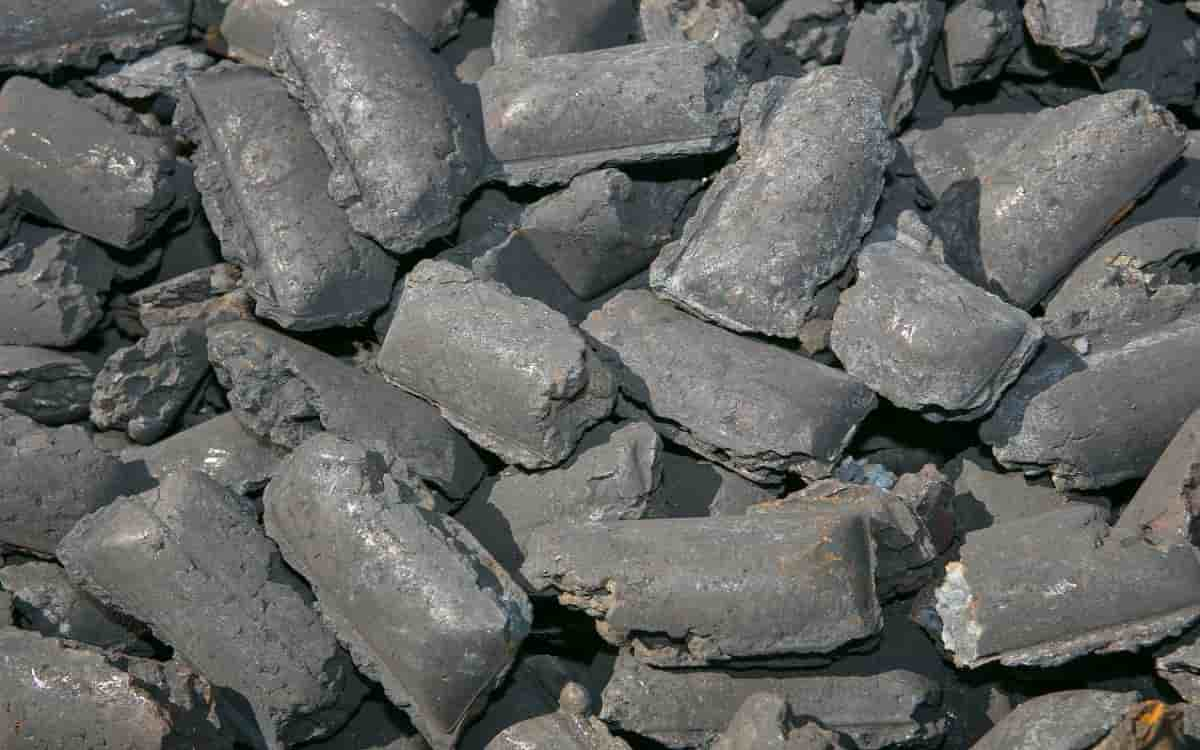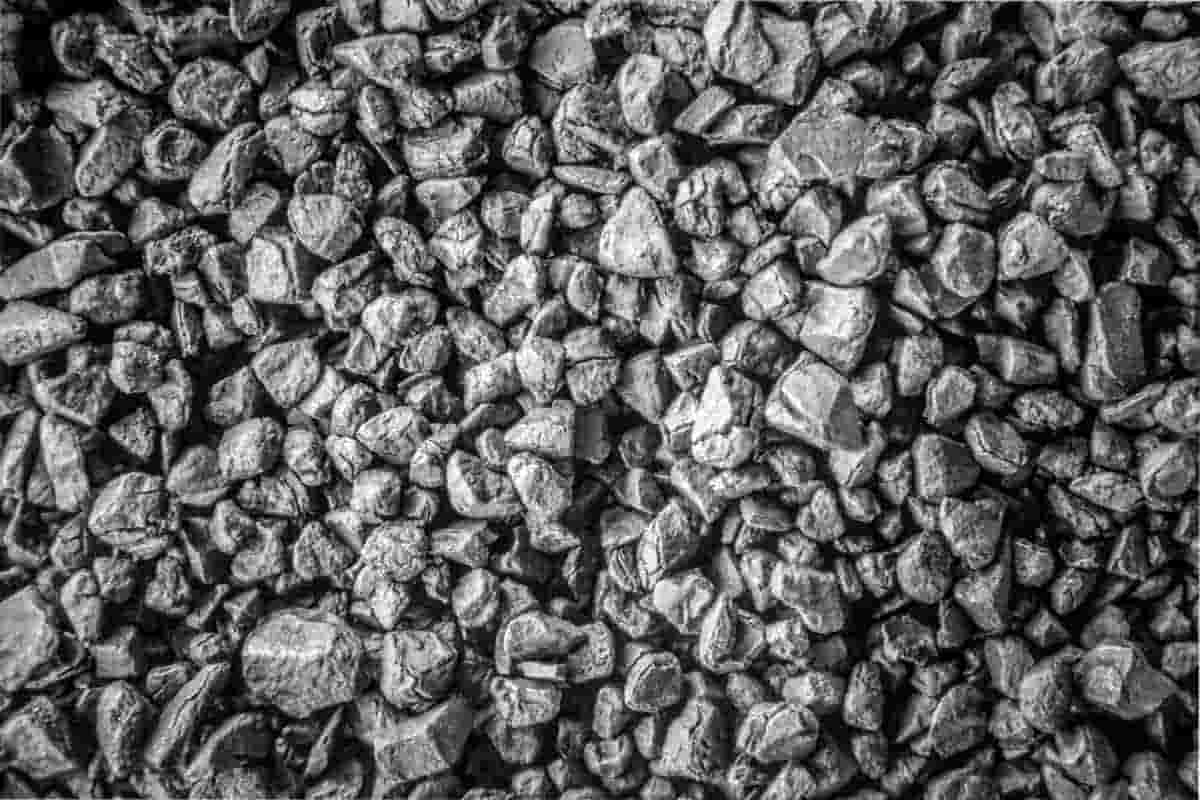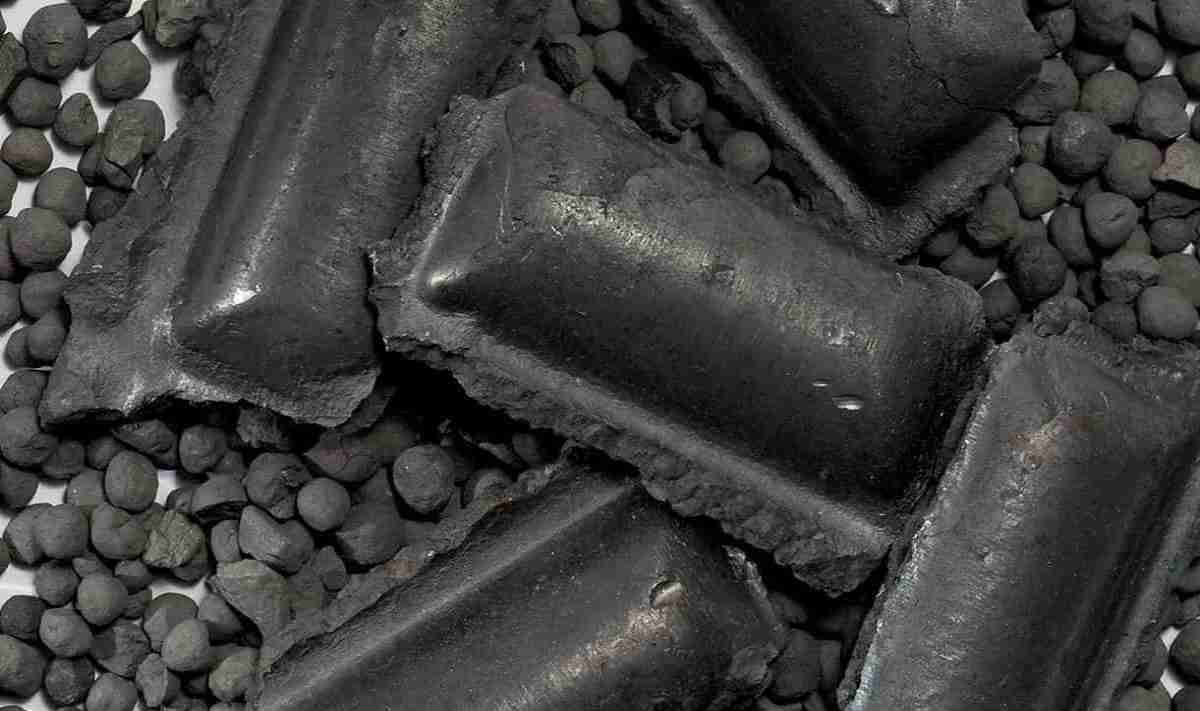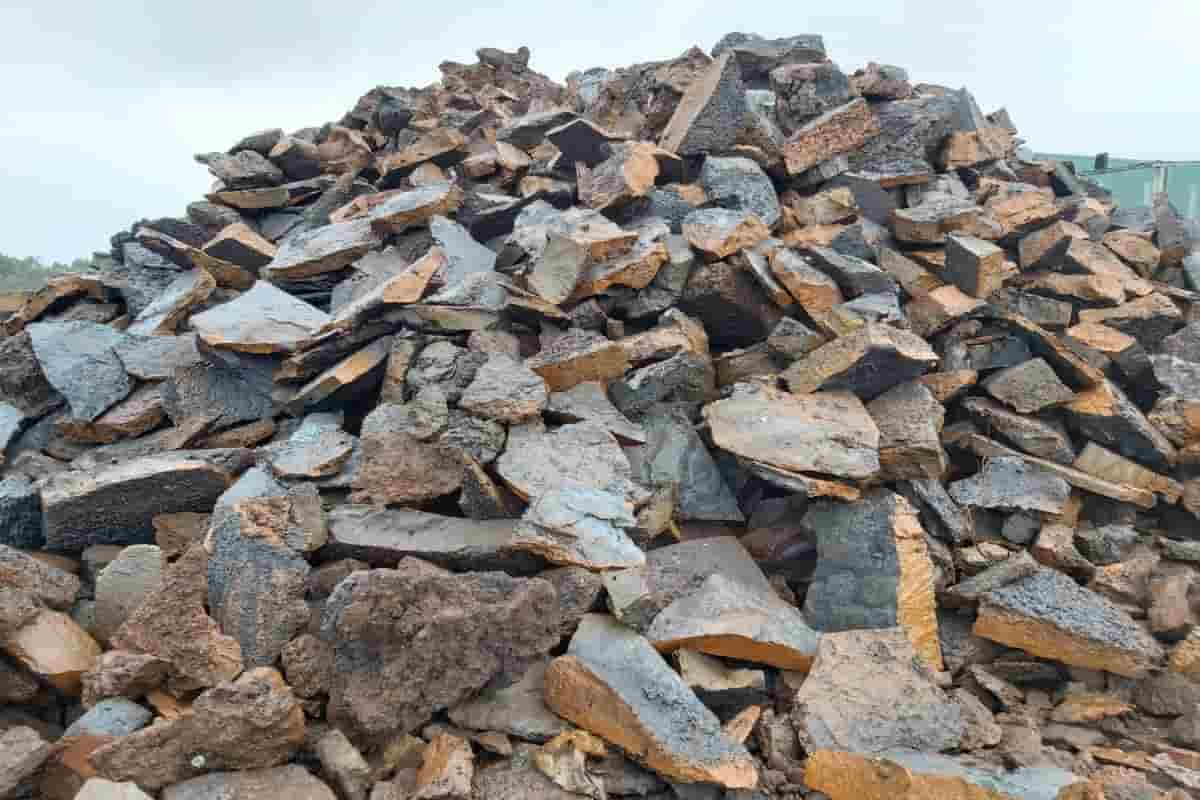Price of sponge iron + Buy and sell wholesale sponge iron
Sponge iron is made from iron ore and the Direct Reduced Iron method, it is a porous product with a detailed composition and analysis. Porous spheres with a size of 9-25 mm have a high probability of oxidation processes due to the high porosity in them.
sponge iron
Indeed, for consumer factories, the most important problem with sponge iron during transport and storage is the potential for oxidation of this product when exposed to moisture and heat. There is also the possibility of fire.
This problem can be dangerous if the product has a large volume.
 Oxidized sponge iron products have very low melting efficiency and cannot even be used in induction furnaces, especially small ones. But maybe in an arc furnace or a large induction furnace, it could be used to control the carbon percentage instead of melting.
In fact, oxidized sponge iron has no value in melting and collection, and if the necessary precautions are not taken during the transportation of this product, the product will oxidize during transportation or storage, and the buyer has actually lost it.
This issue becomes even more important in the export business given the longer shipping distances. Experts recommend two solutions to prevent this problem.
Oxidized sponge iron products have very low melting efficiency and cannot even be used in induction furnaces, especially small ones. But maybe in an arc furnace or a large induction furnace, it could be used to control the carbon percentage instead of melting.
In fact, oxidized sponge iron has no value in melting and collection, and if the necessary precautions are not taken during the transportation of this product, the product will oxidize during transportation or storage, and the buyer has actually lost it.
This issue becomes even more important in the export business given the longer shipping distances. Experts recommend two solutions to prevent this problem.
- Pack sponge iron in big bags
- Convert sponge iron to sponge iron briquettes
Currently, both methods and solutions are used for the purchase and sale of sponge iron in the export sector.
Part of the sponge iron is exported in the form of big bags of the product, and part of the sponge iron is exported after being converted into hot sponge iron balls (hbi) or cold sponge iron balls.
Sponge iron is one of the products that has recently gained many fans and is known as an attractive option in the steel market.
The product comes from the direct recovery of iron ore, and its main feature is its high quality, which makes the product popular among buyers. Over the past few years, various methods have been invented to improve production efficiency and used in different countries.
Iran also uses the knowledge and experience of domestic experts to localize the production methods of iron sponge and becomes one of the largest producers of this product.
Sponge iron or porous pellets is a material produced by recovering iron ore in a direct way (directly reduced iron), i.e. without the need for a melting operation.
During the direct reduction process, due to the release of oxygen, the iron ore turns into spherical lumps with a porous appearance like a sponge with small pores on the surface. This shape and appearance is also the reason for the name of this product.

sponge iron meaning
After melting and during casting, sponge iron is transformed into three products: ingots, plates and rebar, which are sent to factories for various purposes, where they are transformed into other more widespread products.
The grade of pellet iron is very high, and due to the scarcity of scrap iron and environmental concerns, it is of great concern today and is referred to as a suitable substitute for scrap iron.
The production method for sponge iron
In general, iron ore is regenerated by both natural gas and coal methods and leads to the production of sponge iron.
The process of regenerating iron ore from natural gas is achieved by three methods: Midrex, HYL, and Purofer, among these methods Midrex is more practical than others. Jindal, DRC, and SL/RN methods are also used in the regeneration process using coal to produce this product.
SL/Rn method production
In this method, coal replaces natural gas for the iron ore regeneration process. The process includes a feed part where the raw materials are mixed together.
The raw materials, including iron ore or iron lumps, are first introduced into the feeding section, and then lime and dolomite are added to the raw materials together with coal and sent to the horizontal furnace for the regeneration stage.
One of the reasons for using dolomite and lime in the raw materials is to help maintain the required sulfur percentage for the process. In a horizontal furnace section with a slight slope and moving in a rotary manner, the raw material is poured there and moved slowly through the furnace.
During this step, the temperature in the furnace is raised to the point where the coal does not coke and begins to burn and produce carbon dioxide. Carbon dioxide continues to be produced and the temperature rises until the iron ore is fully regenerated.
the teacher's method
In this method, which is considered to be one of the most suitable for the regeneration of iron ore, methane gas is first fed into a fracturing unit, where it is broken down into two regeneration gases, oxygen and hydrogen. The decomposed methane is then blown into a cylindrical furnace.

sponge iron uses
While blowing out the decomposed methane, iron ore is thrown into the furnace from above and collides with the decomposed methane gas.
The decomposed natural methane gas is heated as it is blown into the furnace and the iron ore loses oxygen when it comes into contact with it.
Finally, the baked and hardened porous iron balls are presented as the final product. Sponge iron produced by the Midrex method requires more energy during the melting process due to its hardness.
HYL method
In the HYL method, like the Midrex method, natural gas is used to recover iron ore, except that the equipment and end product production steps required for the process are more complex and expensive than in the Midrex method.
The iron ore recovery process consists of two general parts, the natural gas production, and decomposition part and the iron reduction furnace part.
In a natural gas production plant, natural gas is combined with water vapor, which results in the decomposition of the constituent elements. These elements will then be blasted in a furnace along with iron ore, the final product of sponge iron.

direct reduced iron composition
the composition of iron ore and direct reduced iron or sponge iron are mostly Fe. In general, sponge iron is considered a suitable substitute for scrap iron.
Therefore, a high proportion of raw materials can be prepared to supply the smelting required by the steel mill, instead of using waste. One of the main uses of this product is in induction furnaces, which can replace 50% of scrap.
One of the other uses of sponge iron is the use of this product in the cast iron and steel industry, where stronger steel of better quality can be produced due to the high purity of the iron and its special chemical composition.
In the electric arc furnace, he mentioned, it increases the productivity and efficiency of the ingot to the right amount.
The use of this product in industries that produce weapons and iron tools is one of the other uses and distinctions of sponge iron from scrap iron, which gives these products greater strength due to their properties.
The dangers of iron fungus
The ability to oxidize, rust, and highly flammable in paste form is one of the important dangers of iron sponges. To solve these problems, it is necessary to convert this product to steel as soon as possible or consider protecting it.
To solve the oxidation problem, this product can also be protected by lime, water glass, and neutral gas and placed in a covered main chamber.
The difference between sponge iron and pellet iron
Regarding the difference between sponge iron and pellets, it can be explained that pellets are made from iron ore concentrate (damaged form) and several additives for use in direct reduction and smelting units.
But sponge iron is produced by direct regeneration of iron balls without the smelting process. In fact, if we were to briefly explain the difference between these two products, we could say that pellets are the main material for the production of sponge iron.

sponge iron price
What are sponge iron balls and soft iron?
The briquettes are actually the same as sponge iron The difference is that they are compressed into large pieces during the production process.
Depending on the type of material and the temperature of the briquettes, they are divided into three categories: cold briquettes, hot briquettes, and soft briquettes. or the same soft iron sponge) are shared.
According to the production process, iron balls are divided into hot-pressed balls, cold-pressed balls, soft-pressed balls and other varieties, each with its own application and physical properties.
The production of soft briquettes is very similar to cold briquettes, the main component of which is dust from steelworks activities.
The briquettes are made by collecting this dust and combining it with a percentage of impurities as assessed by the manufacturer. Soft briquettes are of lower quality than cold worked briquettes, but have many applications in the steel industry due to their reasonable price.
One of the advantages of soft sponge iron balls is that they are easy to transport. Due to its compact texture, it takes up very little space. It is also easier to store for longer than other types of briquettes.
These products have very low oxidative and combustible properties and are considered suitable substitutes for various hazardous fuels.
There are three production methods for soft briquettes, namely the use of natural gas and thermal coal and the direct regeneration method, where the plant chooses the best method with lower costs based on estimated costs and available facilities.
The technology of the sponge ball industry has a history and background of more than 200 years and is used in various industries. Optimization and optimal utilization and inefficiency of secondary materials produced in all walks of life is the key to briquetting.
Therefore, the briquetting industry has been developed to produce products with desired properties. There are two main forms of sponge balls, cold iron balls (CBI) and hot sponge balls (HBI).
In the production of cold iron balls, earth and fine-grained sponge iron, which are called sponge iron softballs (less than 6 mm), are mainly used.
Hot Iron Briquette (HBI) During production, Hot Sponge Iron (HRRI) is used at temperatures above 650 degrees Celsius.
The technology of the sponge ball industry has a history and background of more than 200 years and is used in various industries. Optimization and optimal utilization and inefficiency of secondary materials produced in all walks of life is the key to briquetting.
Production of sponge iron is a product used in induction furnaces and arc furnaces. Since these furnaces do not have the ability to melt iron ore and pellets, their raw material is scrap iron in addition to sponge iron.

sponge iron process
Using sponge iron has many advantages for steel producers in terms of reducing costs and increasing production margins.
But unfortunately, it also has disadvantages. As we mentioned above, the main disadvantage of sponge iron is that it oxidizes over time and cannot store the product.
The production of hot and cold iron sponge balls made experts think of solving these shortcomings and gave birth to the production line of iron sponge balls.
Sponge iron balls have the advantages of sponge iron but the disadvantages i.e. The high possibility of oxidation and fire, is eliminated in this product.
There are two types of sponge iron briquette production.
1) Hot sponge iron briquette The hot sponge iron briquette was obtained in a sponge iron press with an inlet temperature of about 650 degrees Celsius.
This temperature is the same as the iron temperature of the sponge at the end of production. For this reason, the location of the hot briquetting line next to the direct regeneration unit can lead to significant savings in energy consumption.
2) Cold sponge disc is made by mixing and heating different materials such as soft sponge iron (also known as sponge iron) and silicate glue.
The production and manufacturing stages are such that after melting and regeneration in steelmaking, they take different forms in the casting process and are used in three forms: porous, ingot, and rebar.
Sponge iron balls are composed of carbon powder or sponge iron, iron filings, sponge iron soil, and other materials, and are actually compressed from the same sponge iron.
Pellets made from soft or crushed iron ore with other additives, called pellets, are first raw, then cooked and hardened, and finally made into a product. Pellet regeneration is carried out conventionally and directly in blast furnaces.
Today, the most important raw materials for the production of iron ore are briquettes and pellets. The concentrate is the product of iron filling and impurity removal in ironstone, which is done by grinding and softening.
To concentrate at 10% humidity, the wet material must first be mixed with the dry iron ore to improve the quality of the raw material. For high quality, 10% concentrates, the iron ore must be dried using the necessary methods.
One of the most important uses of sponge iron balls is in the production of pig iron and steel, also in induction furnaces, and is a suitable alternative to scrap iron.
Most of the raw materials needed to provide the necessary melting in a steelmaking plant are provided by sponge iron.

How useful is this article to you?
Average Score
5
/
Number of votes:
1
 Oxidized sponge iron products have very low melting efficiency and cannot even be used in induction furnaces, especially small ones. But maybe in an arc furnace or a large induction furnace, it could be used to control the carbon percentage instead of melting.
In fact, oxidized sponge iron has no value in melting and collection, and if the necessary precautions are not taken during the transportation of this product, the product will oxidize during transportation or storage, and the buyer has actually lost it.
This issue becomes even more important in the export business given the longer shipping distances. Experts recommend two solutions to prevent this problem.
Oxidized sponge iron products have very low melting efficiency and cannot even be used in induction furnaces, especially small ones. But maybe in an arc furnace or a large induction furnace, it could be used to control the carbon percentage instead of melting.
In fact, oxidized sponge iron has no value in melting and collection, and if the necessary precautions are not taken during the transportation of this product, the product will oxidize during transportation or storage, and the buyer has actually lost it.
This issue becomes even more important in the export business given the longer shipping distances. Experts recommend two solutions to prevent this problem.






